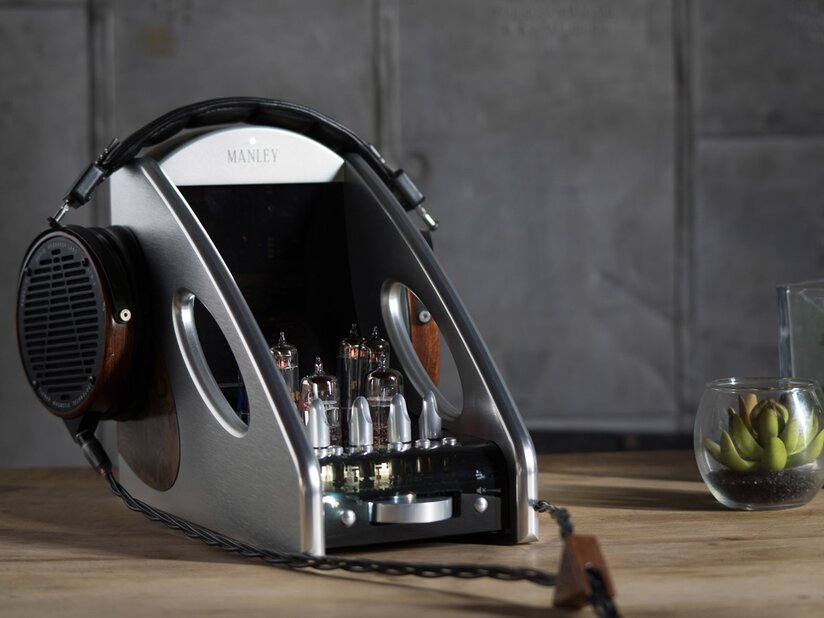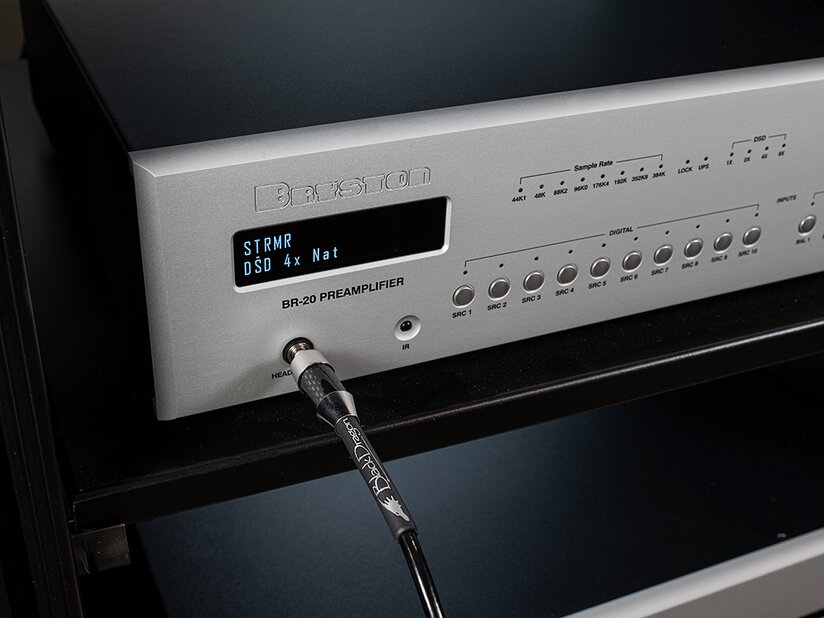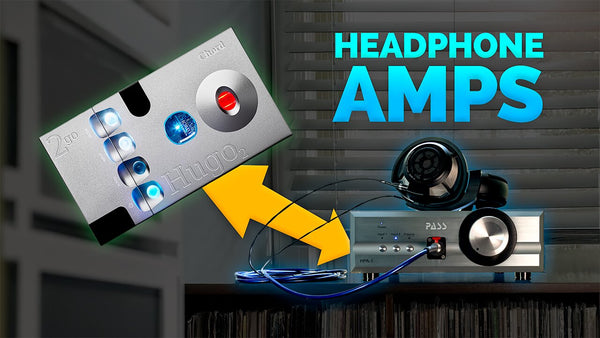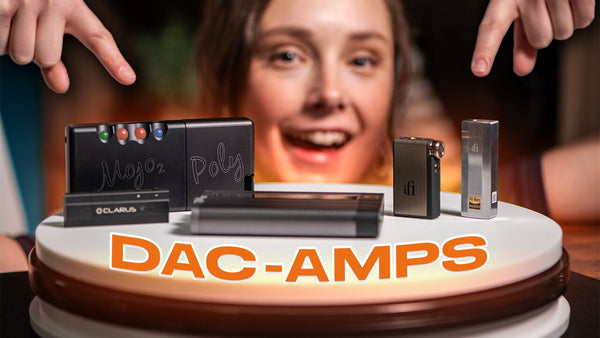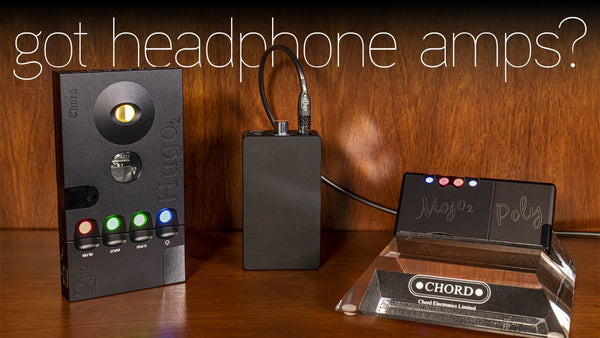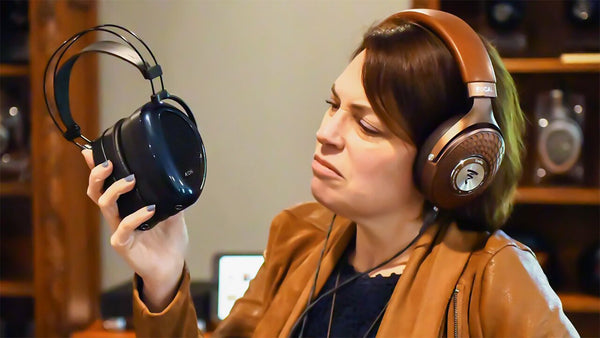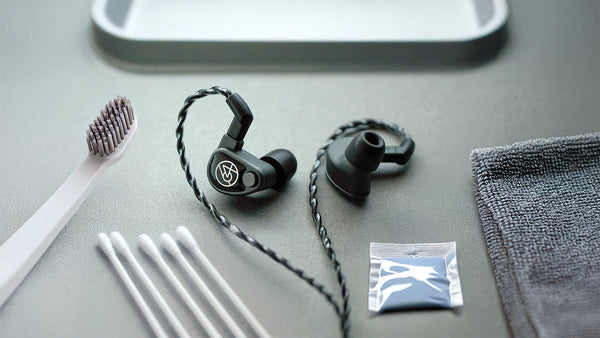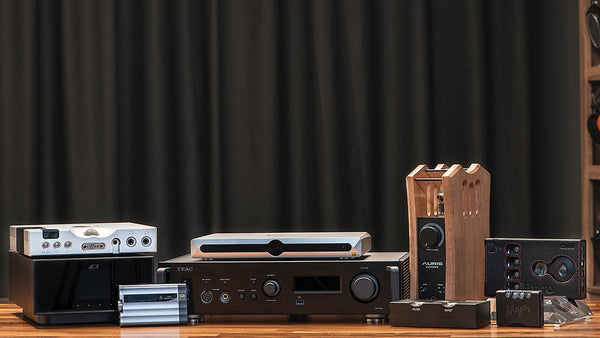Amplifiers Vs. Preamplifiers - What's the Difference?

Preamp or Amplifier? Do I Need Both?
What is the difference between an amplifier and a preamplifier? What does a preamplifier do? Do I need an amplifier or a preamplifier for my hi-fi system? These are all great questions, and for those who want to know, well, you’re in the right place. Amplifiers are the producers of power for your favorite speakers and headphones, but there’s a lot more to it than that. Different amp types, different amp styles, purposes, sizes, and power output – the possibilities and availabilities are endless out there. But what is a preamplifier in comparison? Is it important? Do they do the same thing? I’ll go ahead and answer one question: yes, it is important.
In this guide we’ll answer three primary questions:

"One device that can do many things reasonably well but never excel at any one thing is why I prefer separates in my audio chain. If ergonomics are not an issue and space allows, having a dedicated preamplifier and amplifier almost always results in better performance than a one-box solution. For those who argue that a preamplifier cannot enhance the sound in your signal chain, I suggest they have not yet encountered the right preamplifier. By relieving the power supply of the burden of performing multiple functions, you can significantly reduce noise and distortion. This improvement in efficiency can enhance dynamics and control, elevating your system's performance to the next level."
What Is An Amplifier?
In simple terms, an amplifier is a device that provides power to your speakers or headphones. Speakers and headphones come in two variants: active and passive. Active speakers and headphones have an integrated power source, not needing any additional or external power source for them to make sound. Examples of active headphones would be the Focal Bathys and Sony WH-1000XM5. They have internal batteries and integrated technology like Bluetooth and ANC (active noise-canceling) and will not function without the headphones being powered on (by the internal battery power supply). In this case, the integrated power supply needs to be on for the device to work. The same goes for speakers – all you need to do is connect them to your music source and they will be powered sufficiently by the integrated power amplifier. A great example of powered speakers are the Shape 65 speakers from Focal. These speakers have a connector for your audio source and a power cable. That's it! No need to plug them into an amplifier.
Passive headphones and speakers do not have internal batteries or amplifiers and need to be connected to a power source like an amplifier in order to power the driver so that it can create sound. Most high-end audiophile-grade headphones and speakers are passive and will require an amplifier to work. Amplifiers also come in variations specifically for speakers and headphones. Headphone amplifiers often produce much less power than speaker amplifiers in comparison, because headphones don’t require as much power as the larger drivers contained in speaker cabinets. Headphone amplifiers are essentially low-powered integrated amplifiers that are designed only for headphones. We’ll get more into integrated amplifiers later.
Now the job of the amplifier is simple - to provide power. What's not so simple sometimes is wading through all the different types of amplifiers: tube, solid state, guitar, headphone amps, speaker amps, car audio, and more. Let's take a look at headphone amplifiers versus speaker amplifiers.
Don't overthink this one - headphone amplifiers are for headphones and speakers amps are for speakers. Speakers and headphones have different power requirements, so sometimes you'll find big differences in size from a headphone amp to a speaker amp (though this is not ALWAYS the case). You'll oftentimes find differences in the inputs and outputs of these amplifiers as well. Headphone amps will have headphone outs whereas speaker audio amplifiers will not. Headphone amplifiers can even have multiple headphone outs to accommodate balanced or single-ended connections or even different headphone jack sizes. Speaker amplifiers are typically simple in their I/O usually just having outputs to speakers.
Let's take a look at the Pass Labs HPA-1 and the XA30.8 Stereo Power Amplifier as examples here.
The Pass Labs HPA-1 is a headphone amplifier, as you can see by the headphone output on the front of the device. Standalone headphone amplifiers like this usually have dedicated volume control as well. On the back of the HPA-1, you'll notice that it has a double set of inputs and - interestingly enough - preamp outs. What? Didn't I say this was an amplifier and not a preamplifier?
Well, it turns out that on some occasions, headphone amps can be used as a preamplifier. It depends on the product design, and for fear of causing more confusion right now, I'll talk more about this in the preamplifier section coming up.
The XA30.8 on the other hand is a standalone speaker amplifier. No pre-stage or volume control. No bells and whistles. No headphone outputs. It's just a big box that has a power button and speaker outs. Its sole job is to provide stable and clean power to the speakers that you're connecting to. It's a solid-state amp, and you'll see the big fins on the side here act like heat sinks to help dispel heat from the device. Amplifiers get hot - it’s all part of their design, so manufacturers will do anything they can to help remove heat from the amplifier. You'll see heat sinks on the amp (metal fin-looking designs), maybe it's a milled aluminum chassis that naturally dispels heat, or they might even have built-in fans to force heat out.
You'll also notice that on standalone speaker amplifiers, there is no volume control or input switching. This is because in most cases the amplifier is the last stage in a signal chain before getting to the speaker or headphone. The only job of the amplifier stage is to amplify the incoming signal so it has the power to drive the speaker drivers. That's it. Typically in larger systems, the volume control and input switching are done at the preamplifier stage. More on that in a bit.
You'll know a tube amplifier when you see one. In audiophile-grade headphones and speaker amplifiers, you'll see the tubes exposed on the top of the amp, depending on the design. Exposing tubes like this is often one of the most efficient ways to prevent overheating. Tube amplifiers output a lot of heat compared to solid state amplifiers. Why? It's just by design mostly. Tube technology is older and many audiophiles like the more vintage and warmer sound or presentation it provides.
Solid-state technology is much newer and more readily available today. The technology itself is much cheaper to produce, can provide more power than tubes, and produces less heat - which is why you could argue that there are way more solid-state amplifier designs on the market than tube amplifiers. Solid-state amps provide much less coloration to the music than tubes, making it a perfect fit for music lovers who desire a more analytical and detail-oriented approach to their playback.
Picking between the two comes down to preference in sound signature and ergonomics. We've already talked about the difference in sound between tube and solid state, so if you listen to a handful of genres that sound best to you with either an analytical or more musical presentation, then that will greatly determine what you should choose. If you have speakers that are dry-sounding or lack depth, then you would want to choose a tube amplifier to help add some warmth and musicality to the presentation. Mixing and matching is a great way to find that perfect balance in your personal hi-fi system. Let's say you live in Florida. You might opt for a solid-state amplifier since tubes give off an incredible amount of heat in comparison. If you're running your amplifier a lot of the time (home theater/surround sound environments) it can certainly heat up a room, so to save your electricity bill and having to run your air conditioning over time, a solid-state power amp might be a better choice.
Note: Amp Classes: Amps are divided into classes. The most common classes are Class A, Class AB, and a Class D amplifier. We’ll cover more about these in a later article.
What Is A Preamplifier?
Now we get to explaining the major differences between an amplifier and a preamplifier. The role of the preamplifier is to bring the audio up to line level for proper signal gain throughout the audio chain. "Line-level" is the standard for an audio signal's gain when transmitting analog sound through or between audio equipment. This should also be an indicator as to where the preamplifier goes in the signal chain - and one of the biggest differences between the two. The preamplifier goes towards the beginning of the signal chain - right after the music source - to act at the first stage to set the proper gain for your audio amplifier. The amplifier is the last stage before getting to your headphones or speakers and primarily serves to power them. They amplify the audio signal to the output.
The other purpose of the preamplifier is to provide gain and volume control. This is why a lot of times a standalone speaker amplifier will not have a volume control because that should be set earlier in the signal chain by the preamplifier stage. Sometimes an amp has a preamp stage built-in, in which you'll also see volume control on the amp. The preamplifier stage is just as critical to the system as the amplifier.
Now, there are some cases where a headphone amplifier can be used as a preamplifier. Let's go back to the Pass Labs HPA-1 headphone amplifier as an example. The HPA-1 has preamp outs because it can be used as a preamp. Why? Moon Audio Founder and CEO Drew Baird, P.E. had this to say about the HPA-1 as a preamp:
"After Pass Labs designed the HPA-1 as a headphone amp, they found that it worked well as a preamp too. it's sort of in equilibrium. Let's pretend we have both a headphone amp and a preamp. In terms of the audio circuit and what you need for the output to 1) effectively drive a speaker amp and 2) for it to sound good, the balance between those two circuits has to be pretty close. If this is the case, then a speaker amp can work like a preamplifier." -Drew Baird, P.E.
Again, this is on a case-by-case basis and does not apply to every headphone amplifier out there. It depends on the amp design and audio circuit. Most times you'll know if a headphone amplifier can be used as a standalone preamplifier because it will have designated preamp outputs on the device.
Let's take a look at the Chord Ultima Pre 2 Preamplifier. In most cases, designated preamps will have both volume/gain control and I/O switching. It will act like a hub for your audiophile system since you'll be able to connect additional audio sources. Think of it like a master control for your sound system. The Chord Ultima Pre 2 actually includes a headphone amplifier with designated headphone outs as an option as well. It's not built to be a standalone headphone amplifier, but lots of times manufacturers add additional features for better utility overall. The headphone out in this case is a bells and whistles option only - the main purpose of the Ultima Pre 2 is to be a master control - volume and I/O switching.
This is a great option for people who have lots of things they want to connect to their system. However, if you don't want to connect a network of devices together or want a more simplified setup, then an amplifier - or preamplifier - like the Pass Labs HPA-1 would be a stellar choice. It's versatile since it can be used as both an amp and preamp, works as a headphone amp, and it's basically just plug in your source, plug in your headphones and you're good to go. It's all about what you want in your audio system and how you want to do it.
Do I Need An Amplifier Or A Preamplifier?
Yes. No matter if you have a headphone amp or speaker/stereo amplifier, you will still need a preamplifier or a preamp stage to adequately get your music from a source to your amplified destination. Your headphones and speaker amps are optimized to receive a signal that is at line level - which is exactly what the preamplifier stage does. Again, sometimes amplifiers come with integrated preamp stages, or in the case of headphone amps can be used as dedicated preamps if the design allows.
Integrated amplifiers come with both the preamp and amp stages in the device. All-in-one units like the Naim Uniti Atom HE come with everything: source, preamp, DAC, Amp, and a great selection of I/O. However, in each of these cases, there will be both a preamp and power amplifier stage built-in.
So if you have an amplifier but no preamp stage, then you will need a preamplifier. If you have a unit that has both then great! Let's say you don't know which one you have. It's easy enough to figure out. If your source powers on (and you know it’s powered sufficiently) but you do not hear anything, or the volume is severely low, then chances are you do not have a preamplifier. If your headphones or speakers are not powering on, or might not have enough power to run efficiently, then you will need a power amplifier. Power output on devices varies, as do power requirements for different headphones and loudspeakers, so make sure your devices are receiving enough power through your amplifier stage and have a preamp stage included for optimal sound quality. Be sure to check specs like wattage, ohms, amperage, etc.
Dragon Cables
Amps and Preamps are also limited by the quality of the cables that are connected to them. For all our amplifier and preamplifier options at Moon Audio, we recommend our award-winning Silver Dragon Interconnects. Sold in Pairs, the Silver Dragon V2 is our top-of-the-line silver conductor based interconnect. With a braided geometry and amazing shielding, this interconnect is a remarkable solution where noise isolation is key. For a warmer and more musical presentation, we recommend our Bronze Dragon Interconnects.
Our HiFi Audio Dragon Cables bring out more of what you love in your music and audio gear. If you love your headphones but wish they had a bit more top-end sparkle - a Silver Dragon Headphone Cable would be a great option. If your USB cables keep dying - as many stock cables do - then check out our quality USB Audio Cables. We say time and time again that materials matter, and our audio cables and custom geometries actually help to bring out those desired properties in your gear and music. We make tons of custom options for our customers so that you can get the right HiFi Audio cable for your exact needs. If you have any questions feel free to Contact Us and we'll be more than happy to help.
Generally, stock audio cables are manufactured with subpar materials, metals with impurities, poor geometries, and an overabundance of layers to make them look and feel like a fire hose. Inconsistency and lack of quality control in stock cables can lead to poor sound quality and a veiled sound vs. what the musician intended for you to hear and feel from the music. Dragon Audio Cables are handcrafted with the highest standards and made to order according to your specific needs. At Moon Audio, we create a custom cable for you using the highest quality UP-OCC silver or copper conductors that can be manufactured. UP-OCC metals are void of impurities and are optimized for signal transfer and sound quality. We have one of the largest collections of audio and headphone connection options available online and we create limitless audio cable options depending on your specific gear and needs.
Why Dragon Cables?
You’ve heard the saying that a chain is only as strong as its weakest link, right? Well, the same applies to your brand new audiophile-grade headphone or other audio components. The weakest link, in this case, is your stock audio cable or the cheap interconnects the manufacturer threw in the box just to get you up and running. Why is the audio cable always an afterthought, when it’s just as important as the rest of your system? At Moon Audio, we use the purest and best raw materials in our cables to unveil your music. We believe that materials matter and your audio cables should have the same care and craftsmanship that manufacturers put into their audio components and headphones. Audio cables are ultimately the connection to your music. The fact remains that cabling is often considered the last priority to that of the main product and a means to cut down the overall production costs. It’s as simple as that. Dragon Cables elevate every note - as if you were hearing your favorite music for the very time.
Verdict
Amplifiers and preamplifiers are integral pieces of your audio system. The amplifier provides power to your headphones or speakers, and the role of the preamplifier is to bring your signal to line level, provide volume/gain control, and serve as a master control for your system. You need both for your sound quality to be optimized.
The Pass Labs HPA-1 is a great example of a headphone amp that can do double duty as a standalone preamplifier. Why? Because it was designed that way. Note that all headphone amplifiers will not have this functionality. It's a great option for those who want a simplified design. The XA30.8 on the other hand is a speaker amplifier - no frills, buttons, or knobs - just clean power direct to your speakers. The Chord Ultima Pre 2 is a great example of a preamplifier that works as a master control for your entire system. The great selection of I/O allows the user to connect multiple sources and provide a master volume/gain control for everything. It's a different kind of simplicity for those who like to get their music from numerous sources and be able to efficiently connect it to their system.
Headphone amps, speaker amps, tube amps, solid state amps, single channel or multi-channel amplifiers - there's an amp out there for everyone. It's just a matter of figuring out what you need for your existing home audio system or want for your dream hi-fi system. Let us know how we can help!
Featured Products
Related Videos
Best Headphone Amplifiers of 2022
Dragon Inspire IHA-1 - Need to Know
Dragon Inspire IHA-1 Tube Headphone Amp



